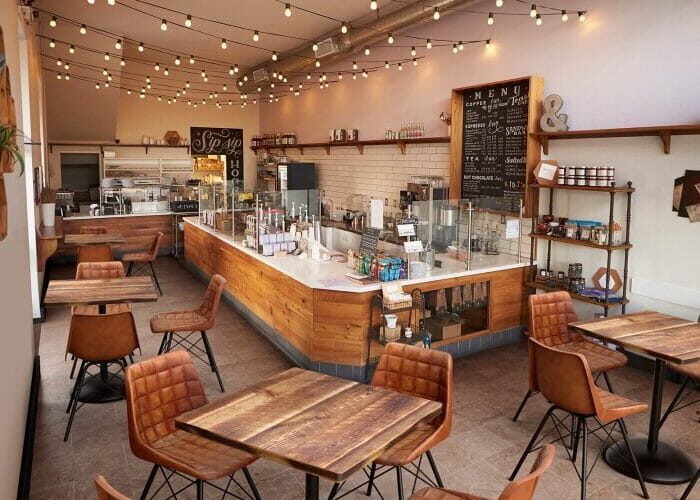In running a successful restaurant, it’s abundantly clear that food quality is just one piece of the puzzle. The ambiance and comfort of the establishment wield substantial influence when it comes to attracting and retaining valued customers. A seemingly simple but intricately nuanced decision, selecting the right furniture, is at the heart of creating a comfortable dining experience.
Understanding your restaurant’s unique theme
Every restaurant boasts a unique theme and concept, setting the stage for a distinctive dining experience. Whether you’re at the helm of a cozy bistro exuding rustic charm, a chic urban eatery resonating with a modern vibe, or a family-friendly diner radiating a warm and inviting atmosphere, your furniture choices must harmonize seamlessly with the chosen concept.
Consider Ferm Living furniture to create a minimalist look that complements your chosen concept. This symbiosis is pivotal in sculpting a memorable, cohesive ambiance that resonates with your guests.
Assessing available space
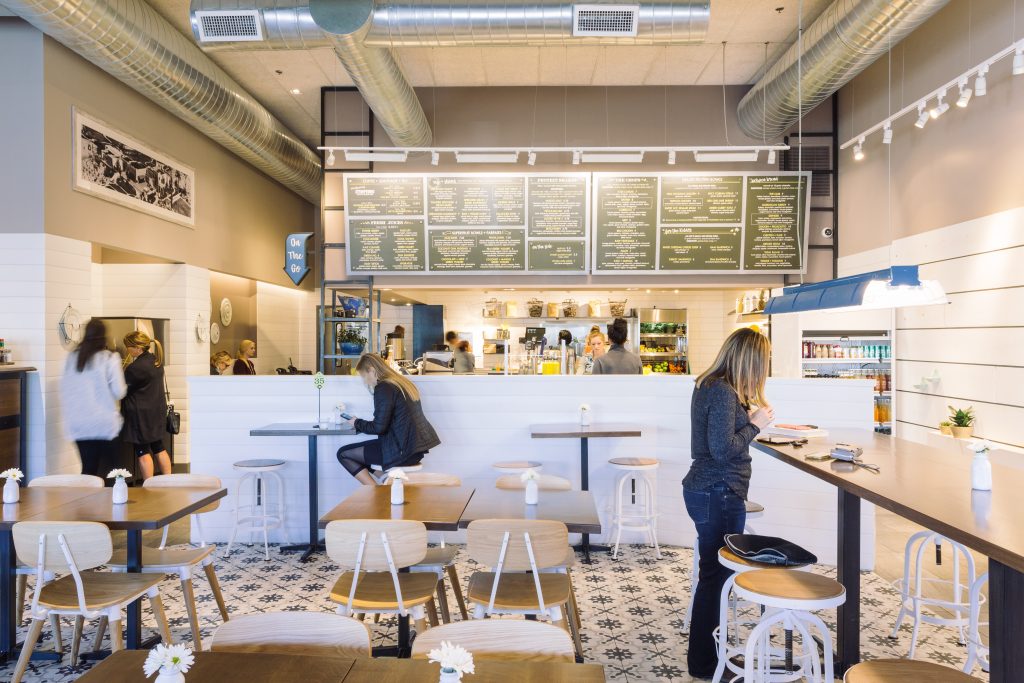
source: modernrestaurantmanagement.com
The dimensions of your restaurant’s available space and the artful layout of your furniture represent foundational considerations. Precise measurements and a meticulous layout evaluation serve as the bedrock for optimizing the arrangement of tables and chairs. A fundamental necessity is ample room, allowing patrons and staff to navigate the dining area effortlessly. The hallmark of a successful layout is a smooth and unhindered flow.
Material selection
The materials employed in the restaurant’s furniture extend beyond aesthetics, encompassing practicality and durability. In al fresco dining areas, a preference for weather-resistant materials like aluminum or teak prevails, capable of enduring diverse weather conditions. Indoors, options such as wood, metal, or upholstered seating strike a balance between style and utility.
Prioritizing comfortable seating
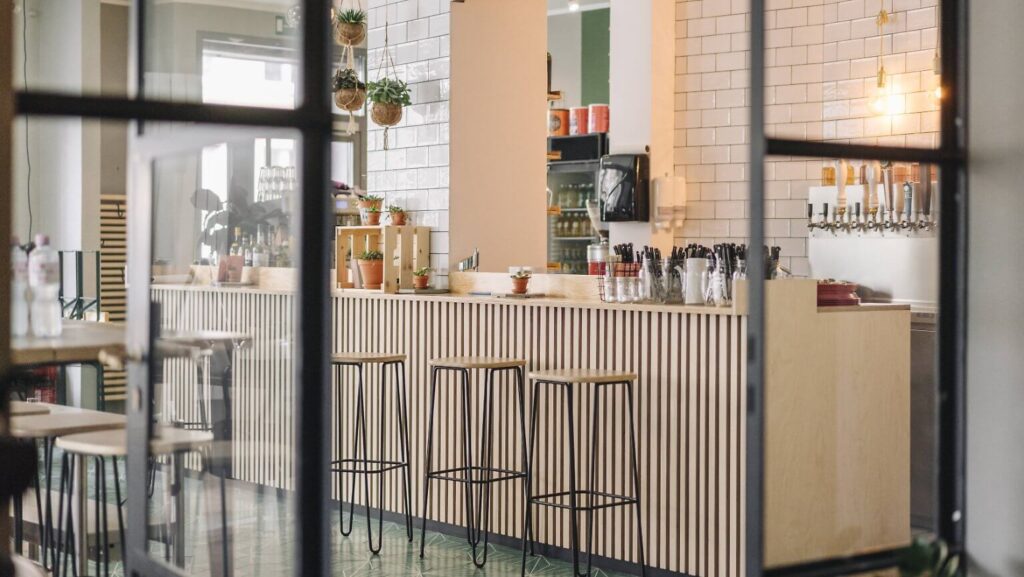
source: designlike.com
Comfort reigns supreme in the realm of restaurant seating. Patrons should revel in relaxation and ease while relishing their meals. Opting for chairs and booths with adequate padding and lumbar support is necessary. Ensuring that seating options are ergonomically designed for prolonged dining experiences is paramount.
Harmonizing aesthetics and functionality
Aesthetics are pivotal in shaping an inviting ambiance, yet functionality should never be sacrificed. Selected furniture should not only exude visual appeal but also flawlessly fulfill its intended functions. Tables should offer sufficient surface area for dishes, while chairs should be easily maneuverable to accommodate varying party sizes.
Durability and low maintenance
Invest in furniture capable of withstanding the daily rigors of a restaurant’s environment. Commercial-grade furniture is meticulously crafted for durability and effortless maintenance, ultimately reducing the necessity for frequent repairs or replacements. This investment ultimately translates into long-term savings.
Tailoring for brand identity
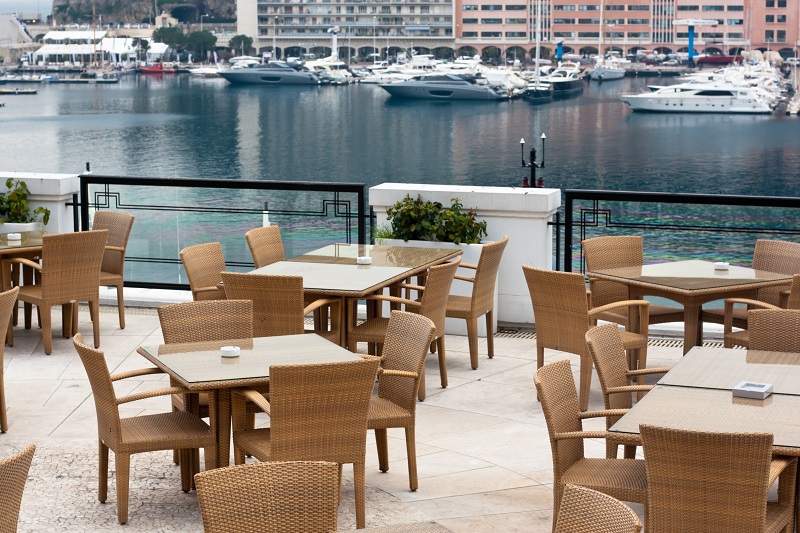
source: pinterest.com
Elevating the restaurant’s brand identity involves customizing the furniture. Contemplating upholstery options that resonate with the brand’s color palette and incorporating logo engraving to reinforce brand recognition are effective strategies. These personalized touches forge a distinct and memorable dining experience for patrons.
Embracing sustainability
As environmental consciousness burgeons, many patrons appreciate restaurants adopting eco-friendly practices. Opting for furniture fashioned from sustainable materials or those with recycling potential demonstrates a commitment to eco-consciousness. This strategy beckons environmentally conscious diners and enhances the restaurant’s reputation as a responsible establishment.
Ergonomics for staff and customers
Prioritizing patrons’ and staff’s well-being and comfort remains a core principle. Ergonomic chairs and tables augment the dining experience and increase staff productivity and job satisfaction. Content and comfortable staff invariably deliver superior service, ultimately elevating customer satisfaction.
Prudent budgeting
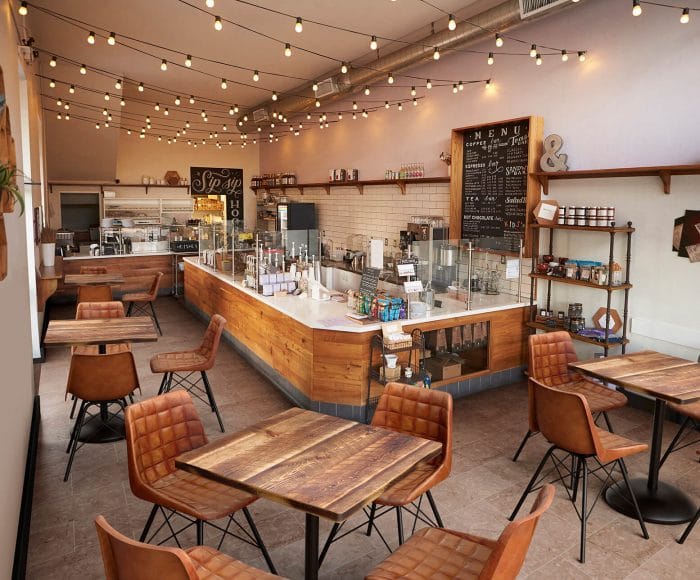
source: pinterest.com
Establishing a transparent budget for furniture procurement is imperative. A spectrum of options is available, spanning diverse price ranges. Striking the right balance between quality and cost-effectiveness ensures that informed decisions align with financial objectives.
Strategic furniture arrangement
The restaurant’s furniture arrangement is pivotal in shaping the overall experience. Thoughtfully crafting the layout fosters a seamless flow for both patrons and staff. Overcrowding must be avoided, and ensuring ample space between tables perpetuates a comfortable and welcoming atmosphere.
Testing before purchasing
Before finalizing furniture selections, a crucial step involves hands-on testing of various pieces within the space. Sitting in chairs, assessing table heights, and making overall feel evaluations ensure that furniture aligns precisely with the restaurant’s requirements.
Staying informed of trends
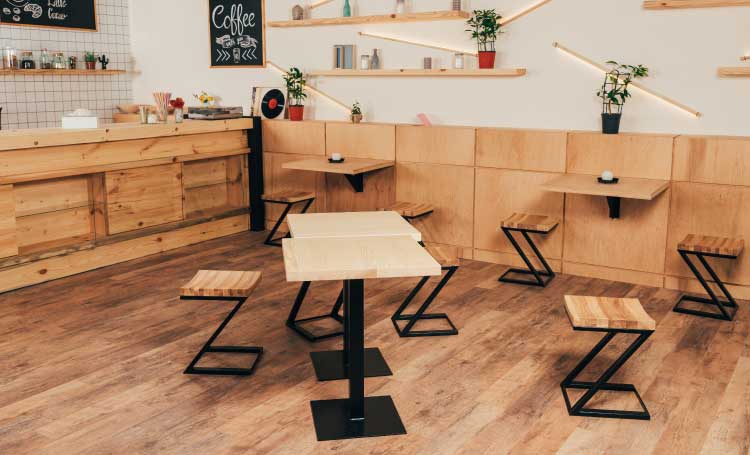
source: expert-market.com
Remaining abreast of the latest trends in restaurant furniture is essential. Trends wield substantial influence over patron preferences and expectations. Incorporating contemporary and avant-garde furniture designs expands the customer base and upholds the restaurant’s inviting ambiance.
Incorporating customer feedback
Once the restaurant commences operations, actively soliciting customer feedback through dedicated customer feedback apps concerning furniture comfort and aesthetics is indispensable. Customer insights are invaluable guides, facilitating necessary adaptations and enhancements that perpetually refine the dining experience.
Final words
The selection of ideal furniture for a restaurant represents a pivotal decision with far-reaching implications for business success. A comprehensive grasp of the restaurant’s theme, meticulous evaluation of available space and material considerations, unwavering prioritization of comfort and functionality, and a vigilant watch on sustainability and design trends collectively contribute to creating a dining milieu that lures patrons back for more delightful experiences.

